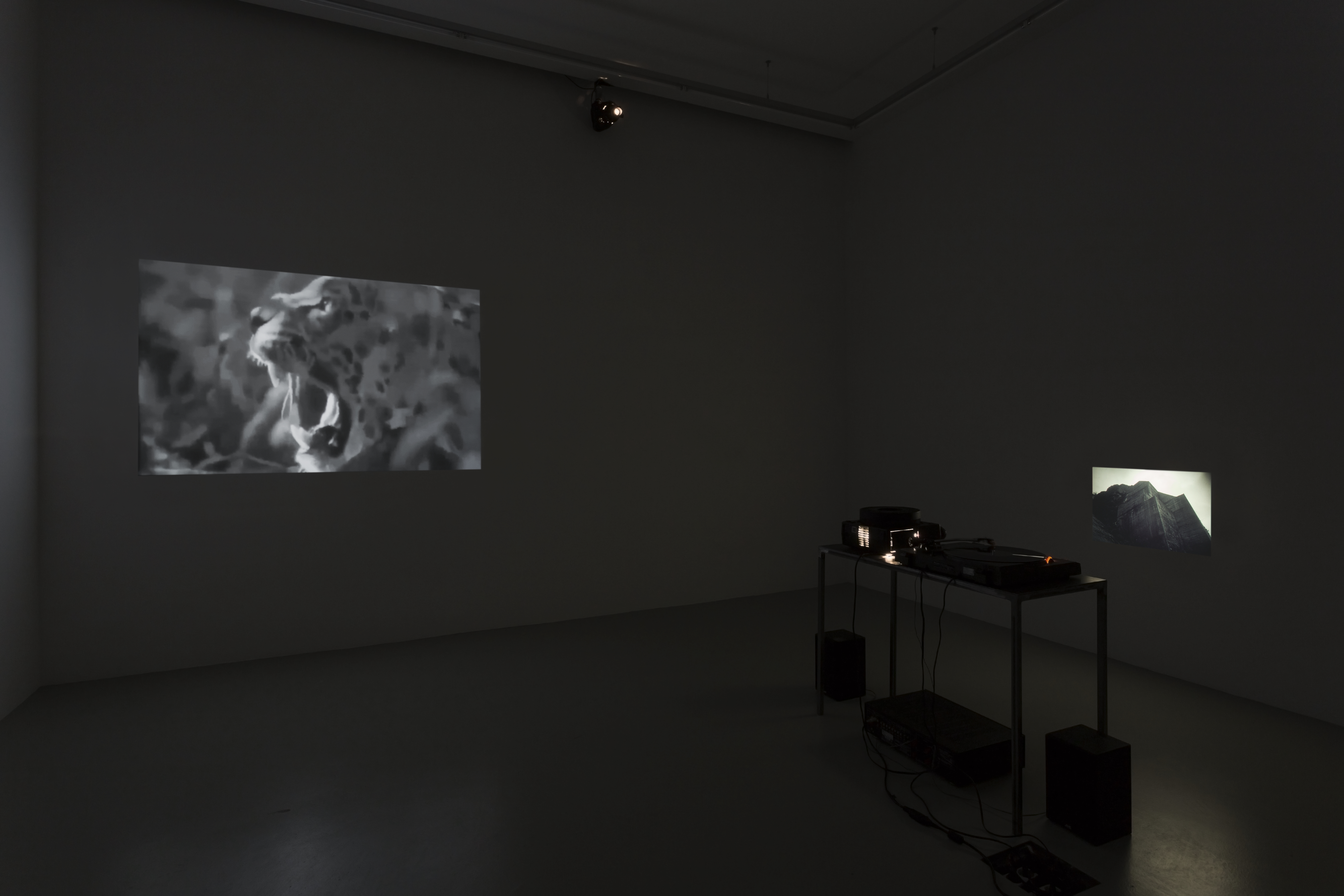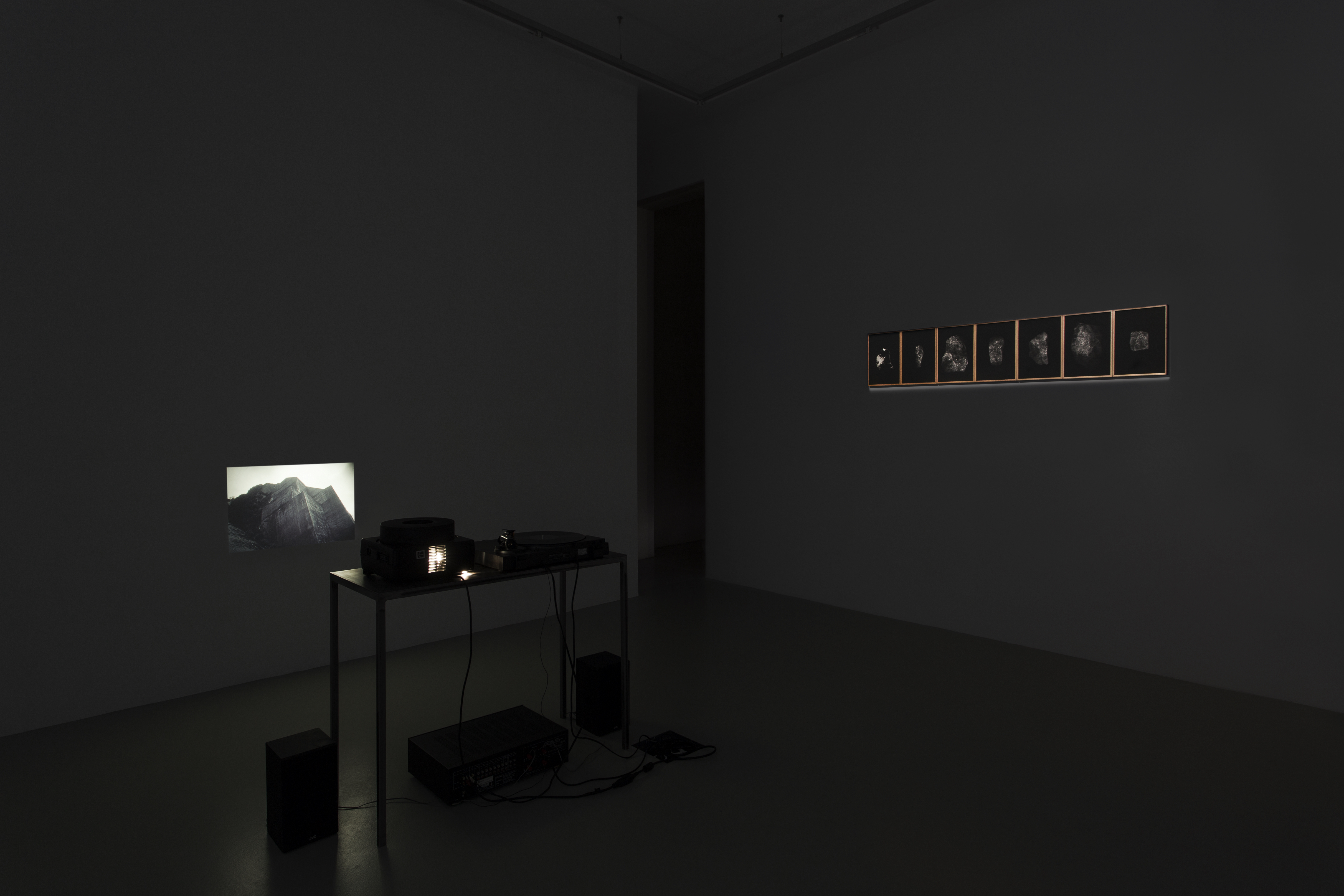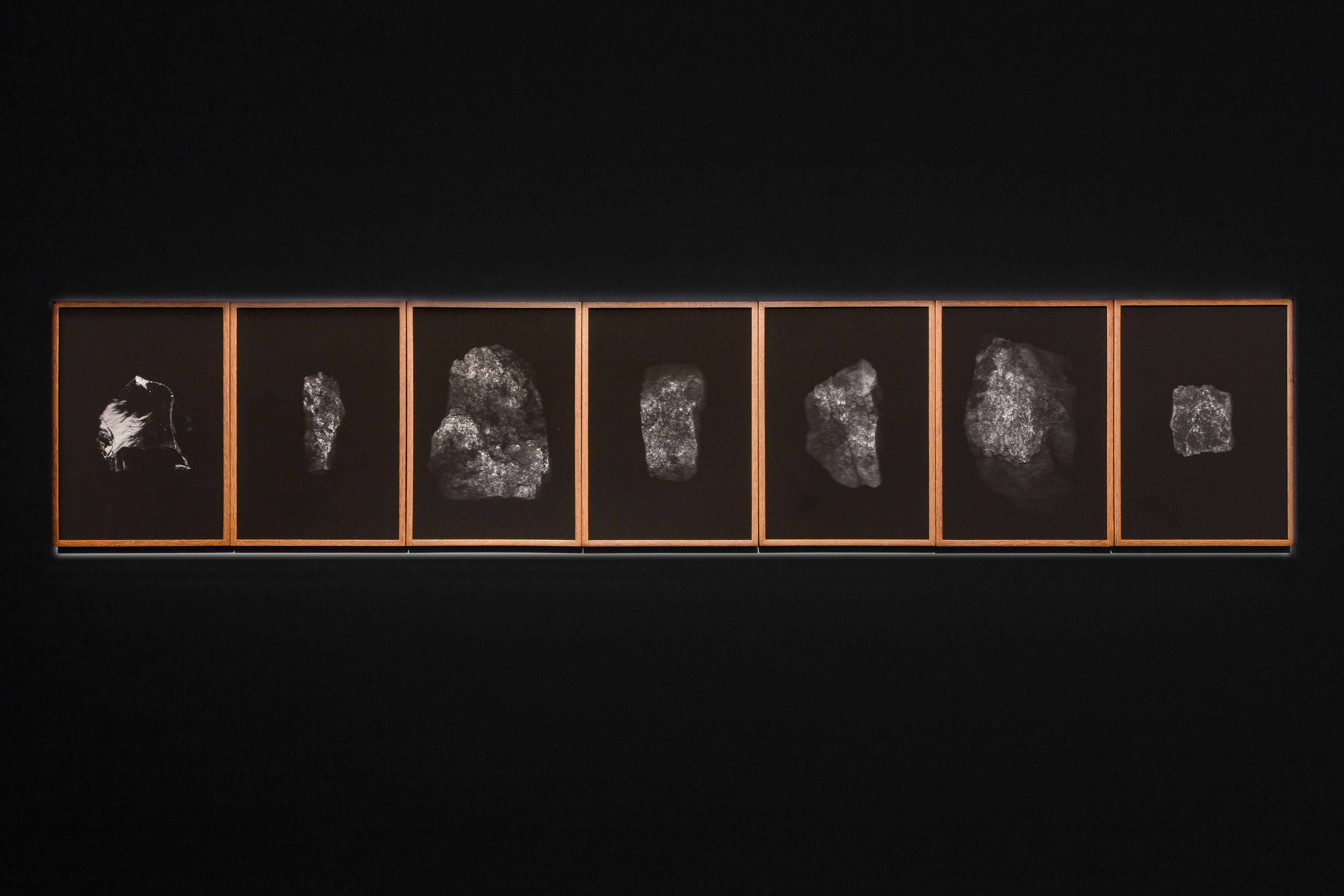




Installation view, 'Now I Became Aged', UMA LULIK_ , 2018
Photo — Bruno Lopes
Now I’ve Become Aged
Now I Became Aged is the first exhibition of Henrique Pavão at Uma Lulik. The title quotes a phrase from The Gods of Mexico by C.A. Burland, a book based on the writings of Bernardino de Sahagún, a Franciscan friar who was part of the armada of the Spanish conquistador Hernán Cortés — and which Robert Smithson, one of Pavão’s favorite artists, read on his seminal journey to the Yucatan, in 1969.
The exhibition includes three works — a video projection, a slide projection with sound, and a series of photographic prints — all of which arose from a trip to the Alto-Lindoso Dam and to the village of Aceredo, which is normally submerged by the water in the reservoir. The presence and the coexistence of recent structures with a group of urban ruins in this peculiar place, gave rise to another voyage (mental, fictional, and speculative), and to the possibility of a perceptual experience able to reconfigure our relationship with space and time.
“Now I Became Aged” (2018) is a black and white video. In the frame, we can see an edition of Burland’s book on the back seat of a car, an object that followed the artist in his physical and imaginary journey towards a diffused time, prone to juxtapositions between the past and the future. The video was shot on the trip between Lisbon and the Alto-Lindoso Dam. The title reproduces a sentence uttered by Quetzalcoatl, a divinity of the Mesoamerican peoples, as he saw his reflection in a black obsidian mirror. The image in the mirror erases all the memories and reveals the future of whoever gazes into it. By saying this phrase, the god departs upon a journey in search of the past in the future. The mirror was given to him by the opposing god, Tezcatlipoca, one of the most feared gods in Aztec mythology. In the video, at intervals of approximately twenty minutes, a shot of the book is interrupted by the sudden, unexpected, and fleeting apparition of a jaguar, filmed somewhere in the Yucatan Peninsula.
The jaguar, a solitary nocturnal animal, is one of the most frequent representations of Tezcatlipoca.
(2018) is composed of a 35mm slide projection, featuring an image of the dam, and is accompanied by a sound piece recorded on vinyl in which we hear the phenomenon which supposedly occurs at the pyramid of Chichen Itza (Yucatan): if one claps their hands in front of this pyramid, the sound reverberates up the stairs of the pyramid, and then continues through the temple on top of this structure, and produces the echo of the Quetzal bird, the main representation of the god Quetzalcoatl. This is a diptych that confronts a contemporary construction with a Mayan pyramid, two massive monuments which exhale a spiraled and creative, but also phenomenological and projective time, which permits the conjugation of two distant historical moments. The title quotes a famous phrase by Nabokov, which inspired the idea of “ruins in reverse,” referred to by Robert Smithson in his essay A Tour of the Monuments of Passaic (1967).
To Erase Time One Requires Mirrors, Not Rocks (2018), the third piece, is composed of 7 images of stones. Six of these stones were collected by the artist in the old village of Aceredo, which resurfaces whenever the Minho river is affected by severe droughts, as has happened in the recent months. The stones are artifacts from other times, they are witnesses to an unending loop, which is present in all the elements of the exhibition. However, the seventh stone was not taken from this village: it is an obsidian stone from Mexico, the basis of the black mirror which Tezcatlipoca gave to Quetzalcoatl.
The entire show is based upon the possibility, and the openness, of awakening a cosmology wherein the borders between reality and fiction are diluted, and where the remissions and juxtapositions between references from diverse fields of interest, such as mythology and literature, archaeology, art and architecture, are legitimate and fertile. Both rhetorical and aesthetic, this is a space where the imagination — and its intrinsic potential of assembly — is free to operate within these intervals of time and symbolic migrations.
(2018) is composed of a 35mm slide projection, featuring an image of the dam, and is accompanied by a sound piece recorded on vinyl in which we hear the phenomenon which supposedly occurs at the pyramid of Chichen Itza (Yucatan): if one claps their hands in front of this pyramid, the sound reverberates up the stairs of the pyramid, and then continues through the temple on top of this structure, and produces the echo of the Quetzal bird, the main representation of the god Quetzalcoatl. This is a diptych that confronts a contemporary construction with a Mayan pyramid, two massive monuments which exhale a spiraled and creative, but also phenomenological and projective time, which permits the conjugation of two distant historical moments. The title quotes a famous phrase by Nabokov, which inspired the idea of “ruins in reverse,” referred to by Robert Smithson in his essay A Tour of the Monuments of Passaic (1967).
To Erase Time One Requires Mirrors, Not Rocks (2018), the third piece, is composed of 7 images of stones. Six of these stones were collected by the artist in the old village of Aceredo, which resurfaces whenever the Minho river is affected by severe droughts, as has happened in the recent months. The stones are artifacts from other times, they are witnesses to an unending loop, which is present in all the elements of the exhibition. However, the seventh stone was not taken from this village: it is an obsidian stone from Mexico, the basis of the black mirror which Tezcatlipoca gave to Quetzalcoatl.
The entire show is based upon the possibility, and the openness, of awakening a cosmology wherein the borders between reality and fiction are diluted, and where the remissions and juxtapositions between references from diverse fields of interest, such as mythology and literature, archaeology, art and architecture, are legitimate and fertile. Both rhetorical and aesthetic, this is a space where the imagination — and its intrinsic potential of assembly — is free to operate within these intervals of time and symbolic migrations.